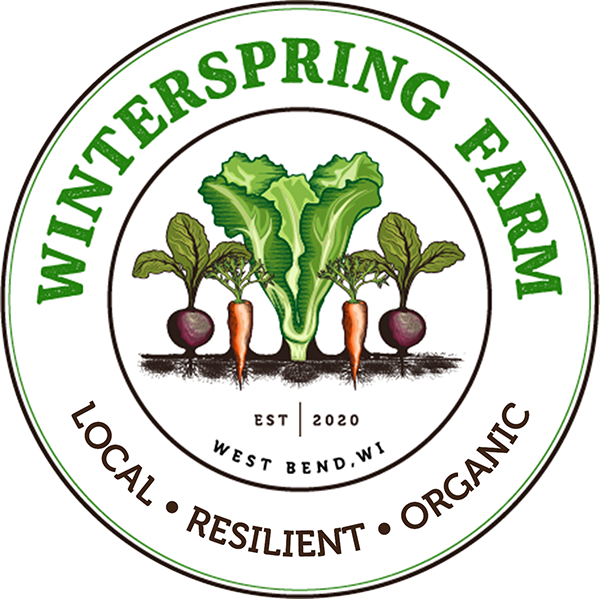Cucumber Seedlings, Diva
SCIENTIFIC NAME:
Cucumis sativus
VARIETIES:
"Diva", Seedless. Especially flavorful when harvested small. Diva produces distinctly tender, crisp, sweet, bitter-free, and seedless thin-skinned cukes. Adapted to open-field production and protected cropping. Harvest at 5–7". Parthenocarpic. High resistance to scab; and intermediate resistance to cucumber vein yellow virus and powdery mildew. Source: Johnny's Selected Seeds
CULTURE:
Cucumbers (Cucumis sativus) are a warm season tender annual in the Cucurbitaceae family, which includes melons, summer squash and winter squash, and gourds. Cucumbers have a variety of shapes, sizes and uses:
Picklers are small and spiny and good for preservation
European slicers have a thin skin which doesn’t store as well but is very tender and delicious
American slicers have a thicker skin which makes them sturdier and good for shipping
Specialty cucumbers in shapes ranging from little spheres to long skinny curly types in gold and green
Cucumbers prefer well-drained fertile soil high in organic matter with neutral pH. Cucumbers are heavy feeders. Side-dressing is recommended one week after blossoming and again 3 weeks later, especially if there are signs of deficiency. Nitrogen deficiencies cause yellowing, and bronze leaves are a sign of potassium deficiency. Cucumbers should be spaced 6” apart in a row, and trellised for best quality.
SCIENTIFIC NAME:
Cucumis sativus
VARIETIES:
"Diva", Seedless. Especially flavorful when harvested small. Diva produces distinctly tender, crisp, sweet, bitter-free, and seedless thin-skinned cukes. Adapted to open-field production and protected cropping. Harvest at 5–7". Parthenocarpic. High resistance to scab; and intermediate resistance to cucumber vein yellow virus and powdery mildew. Source: Johnny's Selected Seeds
CULTURE:
Cucumbers (Cucumis sativus) are a warm season tender annual in the Cucurbitaceae family, which includes melons, summer squash and winter squash, and gourds. Cucumbers have a variety of shapes, sizes and uses:
Picklers are small and spiny and good for preservation
European slicers have a thin skin which doesn’t store as well but is very tender and delicious
American slicers have a thicker skin which makes them sturdier and good for shipping
Specialty cucumbers in shapes ranging from little spheres to long skinny curly types in gold and green
Cucumbers prefer well-drained fertile soil high in organic matter with neutral pH. Cucumbers are heavy feeders. Side-dressing is recommended one week after blossoming and again 3 weeks later, especially if there are signs of deficiency. Nitrogen deficiencies cause yellowing, and bronze leaves are a sign of potassium deficiency. Cucumbers should be spaced 6” apart in a row, and trellised for best quality.
SCIENTIFIC NAME:
Cucumis sativus
VARIETIES:
"Diva", Seedless. Especially flavorful when harvested small. Diva produces distinctly tender, crisp, sweet, bitter-free, and seedless thin-skinned cukes. Adapted to open-field production and protected cropping. Harvest at 5–7". Parthenocarpic. High resistance to scab; and intermediate resistance to cucumber vein yellow virus and powdery mildew. Source: Johnny's Selected Seeds
CULTURE:
Cucumbers (Cucumis sativus) are a warm season tender annual in the Cucurbitaceae family, which includes melons, summer squash and winter squash, and gourds. Cucumbers have a variety of shapes, sizes and uses:
Picklers are small and spiny and good for preservation
European slicers have a thin skin which doesn’t store as well but is very tender and delicious
American slicers have a thicker skin which makes them sturdier and good for shipping
Specialty cucumbers in shapes ranging from little spheres to long skinny curly types in gold and green
Cucumbers prefer well-drained fertile soil high in organic matter with neutral pH. Cucumbers are heavy feeders. Side-dressing is recommended one week after blossoming and again 3 weeks later, especially if there are signs of deficiency. Nitrogen deficiencies cause yellowing, and bronze leaves are a sign of potassium deficiency. Cucumbers should be spaced 6” apart in a row, and trellised for best quality.





